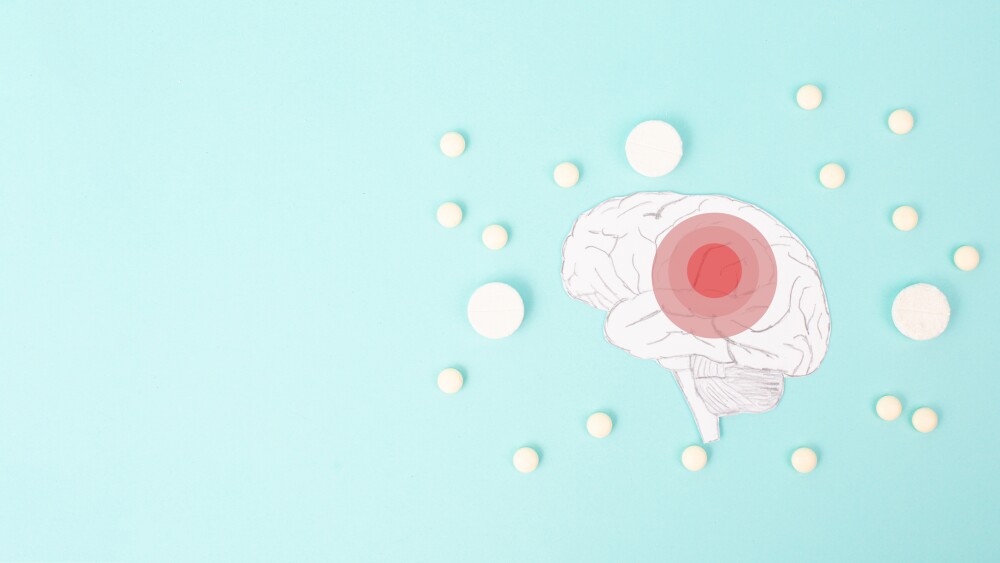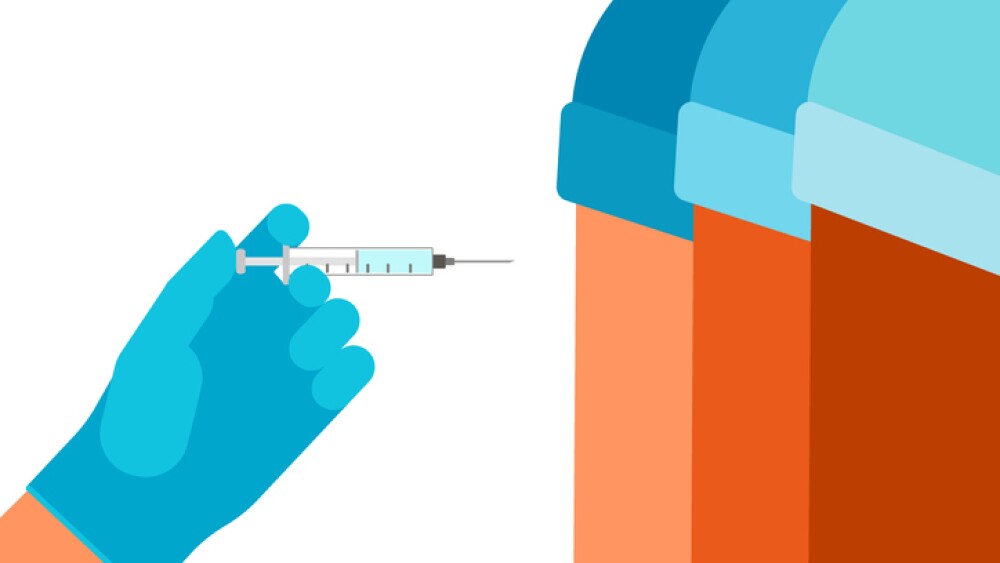American Headache Society (AHS) annual meeting is taking place June 28-July 1 in San Francisco.
|
INDIANAPOLIS, June 25, 2018 /PRNewswire/ -- Eli Lilly and Company(NYSE: LLY) announced today it will present Phase 3 data for galcanezumab and lasmiditan, two investigational, non-opioid treatments for migraine and cluster headache, at the American Headache Society (AHS) annual meeting taking place June 28-July 1 in San Francisco. Lilly will present late-breaking Phase 3 data for galcanezumab from the largest controlled, preventive trial conducted in episodic cluster headache to date, as well as a late-breaking post-hoc analysis from three Phase 3 studies (EVOLVE-1, EVOLVE-2 and REGAIN) evaluating galcanezumab for the prevention of migraine in patients who previously failed treatment with Botox®* (onabotulinumtoxinA). Lilly will also highlight analyses evaluating the onset and persistence of effect of galcanezumab for the prevention of migraine. Additionally, Phase 3 data evaluating lasmiditan for the acute treatment of migraine will be featured as a platform presentation. Galcanezumab is a once-monthly, self-administered calcitonin gene-related peptide (CGRP) antibody currently under review by the U.S. Food and Drug Administration (FDA) for the prevention of migraine in adults with a decision expected by the end of September 2018. Lasmiditan is an investigational, oral, first-in-class molecule that could represent the first significant innovation for the acute treatment of migraine in more than two decades. Galcanezumab and lasmiditan represent two of three investigational, non-opioid treatments in development as part of Lilly's overall pain portfolio. The portfolio also includes tanezumab, developed in partnership with Pfizer, for the treatment of osteoarthritis pain, chronic low back pain and cancer pain. "People with migraine and cluster headache can miss out on significant moments in their lives--birthdays, anniversaries, business meetings--and there remains an unmet need for treatment options that can help patients achieve significant reductions in the overall frequency of migraine headaches and cluster headache attacks," said Robert Conley, M.D., Distinguished Lilly Scholar and Lilly global development leader for migraine therapeutics. "The data presented at this year's meeting underscore Lilly's 50-year commitment to address the ongoing challenges in neurology, primary headache disorders and chronic and recurrent pain." Studies, as well as the dates and times of the data sessions, are highlighted below. Galcanezumab Data PLATFORM PRESENTATIONS Friday, June 29, 2018 - 8:40 - 8:50 a.m. PT
Saturday, June 30, 2018 - 9:20 - 9:30 a.m. PT and 10:10 - 10:20 a.m. PT
POSTER PRESENTATIONS Friday, June 29, 2018 - 1:15 - 2:15 p.m. PT
Saturday, June 30, 2018 - 1:00 p.m. PT
Lasmiditan Data PLATFORM PRESENTATIONS Friday, June 29, 2018 - 11:30 a.m. - 1 p.m. PT
Saturday, June 30, 2018 - 8:10 a.m. - 8:20 a.m. PT
POSTER PRESENTATIONS Saturday, June 30, 2018 - 1:00 p.m. - 2:15 p.m. PT
About Migraine Migraine is a neurological disease characterized by recurrent episodes of severe headache accompanied by other symptoms including nausea, vomiting, sensitivity to light and sound, and changes in vision.[1],[2] More than 36 million Americans have migraine, with three times more women affected by migraine compared to men.[3] According to the Medical Expenditures Panel Survey, total annual healthcare costs associated with migraine are estimated to be as high as $56 billion annually in the United States, yet it remains under-recognized and under-treated.[4] About Cluster Headache Cluster headache is a disabling headache disorder composed of recurrent "attacks" of intense headaches on one side of the head, frequently associated with pain behind or around one eye, restlessness and agitation.[5],[6] Cluster headache attacks typically last between 15 to 180 minutes, occurring near daily to multiple times daily during a cluster period.6 It is estimated that 85 to 90 percent of cluster headache cases are classified as "episodic" with attacks occurring in periods that last from seven days to one year, separated by pain-free remission periods of three months or longer.5 The remaining 10 to 15 percent are classified as "chronic" with attacks occurring for more than one year without a remission period, or with remission lasting less than one month.6 About Lilly's Commitment to Headache Disorders For over 25 years, Lilly has been committed to helping people suffering from headache disorders, investigating more than a dozen different compounds for the treatment of migraine, cluster headache and other disabling headache disorders. These research programs have accelerated the understanding of these diseases and furthered the advancement of Lilly's comprehensive late-stage development programs studying galcanezumab for prevention of migraine and cluster headache, and lasmiditan for the acute treatment of migraine. Our goal is to make life better for people with headache disorders by offering comprehensive solutions to prevent or stop these disabling diseases. The combined clinical, academic and professional experience of our experts helps us to build our research portfolio, identify challenges for healthcare providers and pinpoint the needs of patients living with migraine and cluster headache. About Galcanezumab Galcanezumab is a monoclonal antibody specifically designed to bind to and inhibit the activity of calcitonin gene-related peptide (CGRP), which is believed to play a role in migraine and cluster headache. Galcanezumab is an investigational once-monthly, self-administered injection under evaluation for the prevention of migraine and cluster headache. About Lasmiditan Lasmiditan is an investigational, first-in-class molecule under evaluation for the acute treatment of migraine. Lasmiditan selectively targets 5-HT1F receptors expressed in the trigeminal pathway, and has been designed for the acute treatment of migraine without the vasoconstrictor activity associated with some migraine therapies. In March 2017, Lilly completed the acquisition of CoLucid Pharmaceuticals, including lasmiditan, which was originally discovered at Lilly. About Eli Lilly and Company This press release contains forward-looking statements (as that term is defined in the Private Securities Litigation Reform Act of 1995) about galcanezumab as a potential treatment for patients with migraine and cluster headache; lasmiditan as a potential treatment for patients with migraine; and tanezumab as a potential treatment for patients with osteoarthritis pain, chronic low back pain, and cancer pain; and reflects Lilly's current belief. However, as with any pharmaceutical product, there are substantial risks and uncertainties in the process of development and commercialization. Among other things, there can be no guarantee that future study results will be consistent with the results to date, that galcanezumab or lasmiditan will achieve their primary study endpoints or receive regulatory approvals. For further discussion of these and other risks and uncertainties, see Lilly's most recent Form 10-K and Form 10-Q filings with the United States Securities and Exchange Commission. Except as required by law, Lilly undertakes no duty to update forward-looking statements to reflect events after the date of this release. * Botox ® is a registered trademark owned by Allergan, Inc.
[1] Katsarava Z, Buse D, Manack A, et al. Defining the differences between episodic migraine and chronic migraine. Current Pain Headache Reports. 2012;16:86. [2] Blumenfeld AM, Payne KA, Varon SF, et al. Disability, HRQOL, and resource use amongst chronic and episodic migraineurs. Results from the International Burden of Migraine Study (IBMS). Cephalalgia 2011;31:301.. [3] Identifying and treating migraine. American Migraine Foundation website. https://americanmigrainefoundation.org/understanding-migraine/identifying-treating-migraine/. Last accessed April 19, 2018. [4] Raval AD, Shah A. National trends in direct health care expenditures among US adults with migraine: 2004 to 2013. Journal of Pain. 2017;57:60. [5] Headache Classification Committee of the International Headache Society (IHS). The international classification of headache disorders, 3rd edition. Cephalalgia. 2018;38(1):1-211. [6] Matharu M, Goadsby P. Trigeminal autonomic cephalgias. Journal of Neurology, Neurosurgery, and Psychiatry. 2002;72(Suppl II):ii19-ii26.
Refer to: Jen Dial; dial_jennifer_kay@lilly.com; 317-220-1172 (Lilly Bio-Medicines)
View original content with multimedia:http://www.prnewswire.com/news-releases/lilly-to-present-phase-3-data-at-ahs-2018-highlighting-innovative-potential-treatments-for-migraine-and-cluster-headache-300671337.html SOURCE Eli Lilly and Company |
Company Codes: NYSE:LLY |




